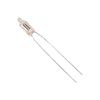Lamps
Artificial lighting is based on systems: lamps, ballasts, starters, luminaires and controls. Ballasts are needed for discharge lamps to connect the lamp to the mains. Lamps, ballasts and starters are mounted in the luminaire with the wiring and lamp bases, reflectors distribute and redirect the light emitted from the lamp and louvers shield the user from glare. Ballast providing a controlled current to the lamps is an essential component of any discharge lighting system. Electronic ballasts complying with CELMA energy efficiency scheme classes A1 and A2 are the major power savers.
The following characteristics are to be considered when choosing a lamp for an application: luminous efficacy, lamp life, quality of light, effect of ambient circumstances, luminaire, purchase and operation costs.
The different types of lamps used are Incandescent lamp, Tungsten halogen lamps, Fluorescent lamp, Compact fluorescent lamps, High-Intensity Discharge lamps, Mercury Lamps, Metal halide lamps, High-pressure sodium lamps, Electrode less lamps. Each of these lamp types has experienced a steady march of small improvements in material, design, light quality, energy efficiency and manufacturing efficiency throughout the past century.
In an incandescent lamp, which is also called General Lighting Service Lamp (GLS), light is produced by leading current through a tungsten wire. The working temperature of tungsten filaments in incandescent lamps is about 2700 K. Therefore the main emission occurs in the infrared region.
Tungsten halogen lamps are derived from incandescent lamps. Inside the bulb, halogen gas limits the evaporation of the filament and redeposits the evaporated tungsten back to the filament through the so called halogen cycle.
A fluorescent lamp is a low-pressure gas discharge light source, in which light is produced predominantly by fluorescent powders activated by ultraviolet radiation generated by discharge in mercury. The performance of a fluorescent lamp is sensitive to the ambient temperature.
The CFL is a compact variant of the fluorescent lamp. The overall length is shortened and the tubular discharge tube is often folded into two to six fingers or a spiral. For a direct replacement of tungsten filament lamps, such compact lamps are equipped with internal ballasts and screw or bayonet caps.
In mercury lamp light is produced with electric current passing through mercury vapour. An arc discharge in mercury vapour at a pressure of about 2 bars emits five strong spectral lines in the visible wavelengths at 404.7 nm, 435.8 nm, 546.1 nm, 577 nm and 579 nm.
Return to main Lighting page




